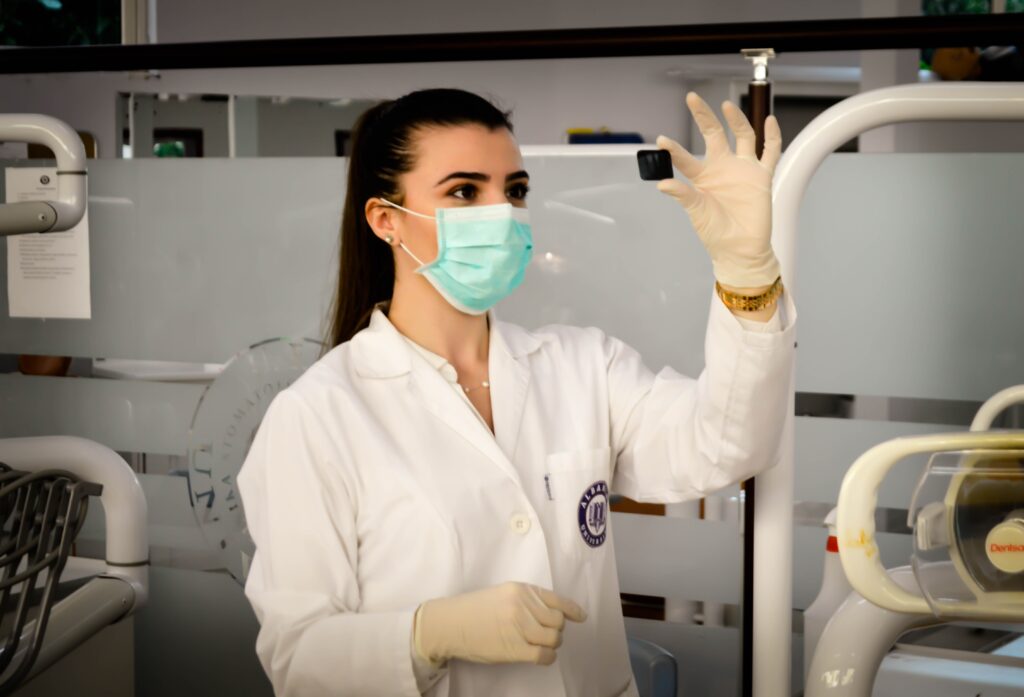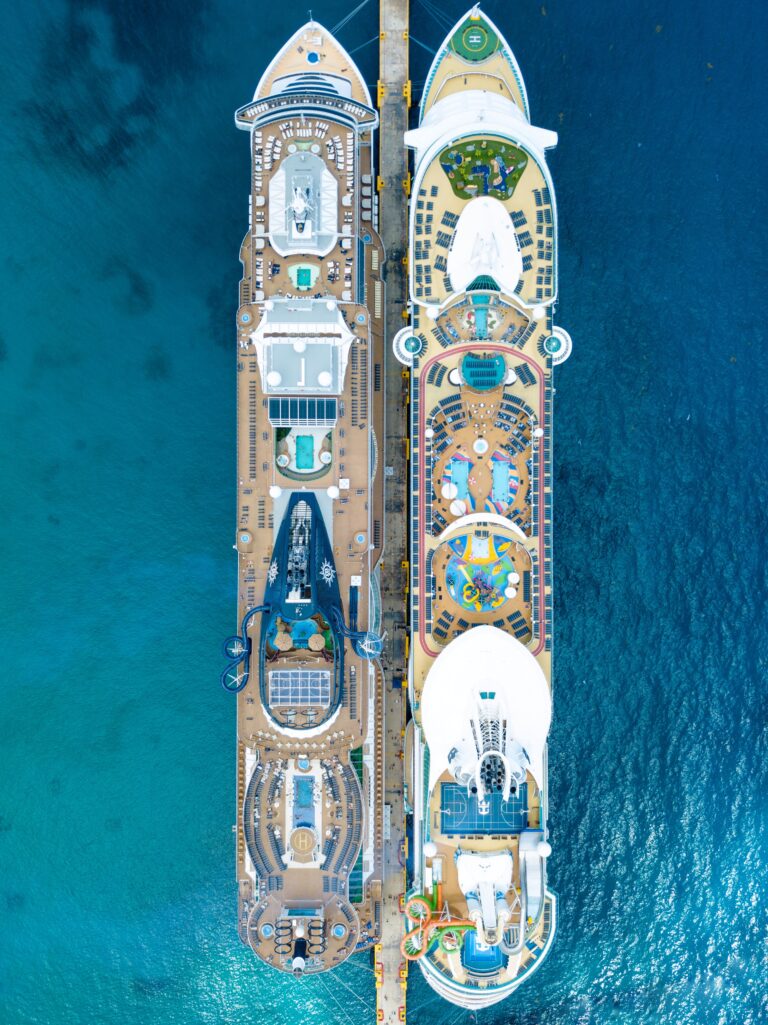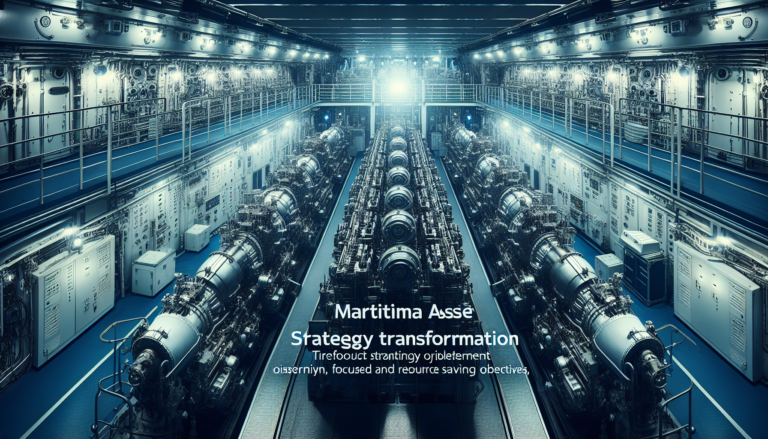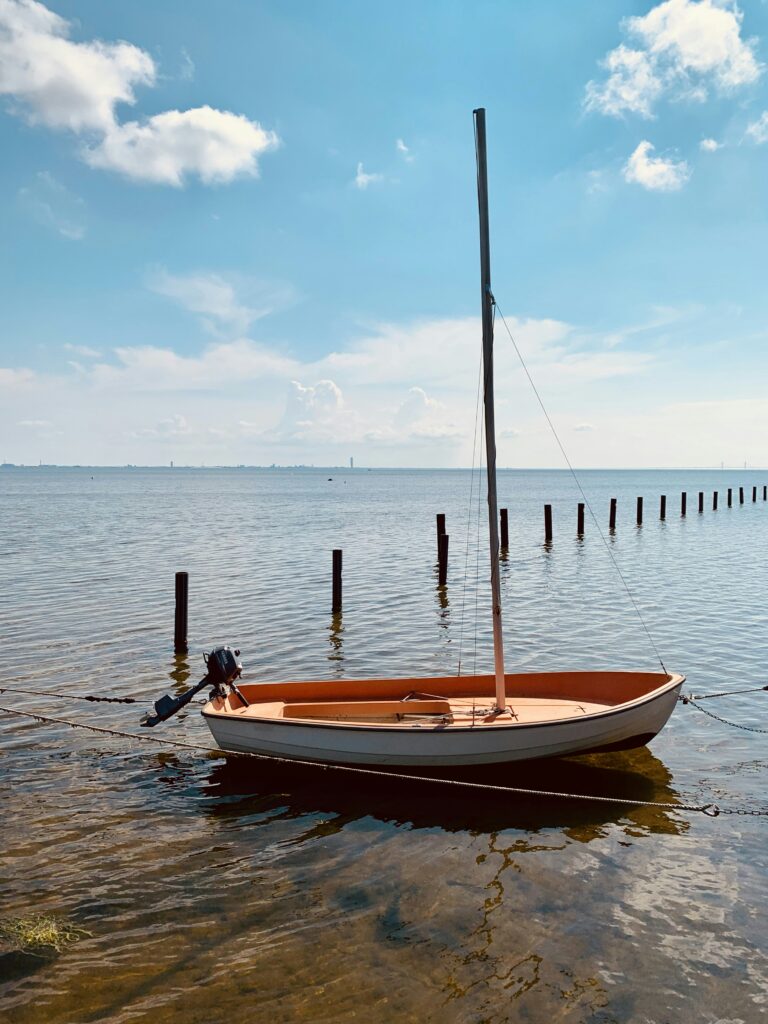The Shocking Truth About Cruise Ship Sanitation
You step aboard a luxurious cruise ship, ready for a week filled with relaxation and fun. As you make your way to your cabin, you can’t help but notice the impeccable cleanliness of the ship. However, beneath the shiny facade lies a shocking truth about cruise ship sanitation. In this article, we will uncover the hidden world of germs and bacteria that lurk on these floating resorts, and explore the measures being taken to ensure the health and safety of passengers. Brace yourself for an eye-opening journey into the not-so-glamorous side of cruising.
Overview of Cruise Ship Sanitation
Cruise ship sanitation is a critical aspect of ensuring the well-being and safety of passengers and crew members on board. With thousands of people living in close quarters and engaging in various activities, cruise ships can become breeding grounds for illnesses if proper sanitation measures are not in place. From food safety to water quality, cleaning and disinfection procedures, waste management, crew training, passenger education, and public health services, every aspect plays a vital role in maintaining a healthy environment on cruise ships.
The Importance of Sanitation on Cruise Ships
Sanitation is of utmost importance on cruise ships due to the close proximity of passengers and crew members, which creates an environment conducive to the spread of infectious diseases. Effective sanitation practices help prevent the outbreak and transmission of illnesses, such as norovirus, salmonella, and E. coli, which can lead to severe symptoms and ruin the vacation experience for passengers. Additionally, maintaining high sanitation standards is vital for the reputation and sustainability of the cruise industry.
Regulations and Guidelines for Cruise Ship Sanitation
To ensure the highest level of sanitation on cruise ships, various regulations and guidelines have been implemented by both international and national authorities. The most prominent framework is developed by the World Health Organization (WHO) and known as the Vessel Sanitation Program (VSP). The VSP establishes standards for sanitation, hygiene, and illness prevention to be followed by cruise ship operators. It includes regular inspections and audits to assess compliance with these standards and holds cruise lines accountable for maintaining adequate sanitation measures.
Common Sanitation Issues on Cruise Ships
Despite the extensive efforts put into maintaining sanitation on cruise ships, certain common issues can still arise. One of the most prevalent problems is gastrointestinal illness outbreaks, often caused by norovirus. These outbreaks can occur due to contaminated food or water, improper handling and storage of food, inadequate disinfection protocols, or failure to isolate infected individuals. Other sanitation issues may include poor cabin hygiene, unsanitary recreational facilities, and inadequate waste management practices.

Food Safety on Cruise Ships
Food safety is one of the primary concerns on cruise ships due to the large-scale provisioning and preparation of meals for a diverse range of passengers. Strict food handling and preparation practices are implemented to ensure the safety and quality of onboard dining experiences. This includes proper storage of ingredients, temperature control measures, thorough cooking practices, and frequent inspections to identify and prevent potential hazards.
Inspections and Audits for Food Safety
Inspections and audits play a crucial role in maintaining food safety standards on cruise ships. These processes are conducted by regulatory agencies, such as the United States Public Health Service (USPH) or the Centers for Disease Control and Prevention (CDC). Inspectors evaluate various areas of food handling, including sanitation of food storage areas, cleanliness and condition of food preparation areas, proper handwashing practices, and the overall hygiene of kitchen staff. These inspections ensure that cruise ship operators are following all required food safety protocols.
Outbreaks of Illnesses on Cruise Ships
Although cruise ship operators strive to maintain high levels of food safety, occasional outbreaks of illnesses may still occur. These outbreaks are often caused by highly contagious viruses like norovirus, which spreads rapidly in closed environments. Factors contributing to these outbreaks can include contaminated food or water, inadequate cleaning and disinfection practices, and poor personal hygiene habits. To mitigate the risk of outbreaks, comprehensive outbreak response plans and increased awareness among crew members and passengers are essential.
Water Quality on Cruise Ships
Ensuring the quality of water on cruise ships is of utmost importance, as it is not only essential for drinking but also used for various purposes, including food preparation, bathing, and recreational activities. The sources of water on cruise ships vary and can include onboard desalination systems, shore connections, or stored provisions. Regardless of the source, stringent water treatment and disinfection processes are necessary to prevent the transmission of waterborne diseases.

Sources of Water on Cruise Ships
Cruise ships obtain water from different sources, depending on their design and location. Some ships use onboard desalination systems that convert seawater into potable water, while others connect to shore water supplies when docked. In both cases, rigorous filtration and purification methods, such as reverse osmosis and ultraviolet (UV) treatment, are employed to ensure the removal of contaminants and microorganisms from the water.
Water Treatment and Disinfection Processes
Water treatment and disinfection processes on cruise ships involve multiple steps to guarantee the provision of clean and safe water. Filtration systems remove particles and sediments, while disinfection methods, such as chlorination or UV irradiation, kill or deactivate harmful bacteria, viruses, and parasites. Regular sampling and testing of water quality are conducted to verify the effectiveness of these processes and maintain compliance with sanitation standards.
Contamination Risks and Preventive Measures
Despite robust water treatment processes, the risk of water contamination can still exist on cruise ships. The sources of potential contamination include issues with water storage or distribution systems, cross-connections, or inadequate maintenance of treatment facilities. To prevent such risks, continuous monitoring, regular maintenance, and periodic inspections of water systems are crucial. Additionally, implementing stringent onboard hygiene practices, such as avoiding contact with non-potable water sources, can help minimize the risk of waterborne diseases.
Cleaning and Disinfection Procedures
Thorough cleaning and disinfection procedures are vital to maintaining a hygienic environment on cruise ships. Proper cleaning protocols are followed for cabins and common areas to ensure that surfaces are free from harmful microorganisms and contaminants. This includes using appropriate cleaning agents, disinfectants, and techniques to remove dirt, dust, and pathogens.

Cleaning Protocols for Cabins and Common Areas
In cabins, cleaning personnel follow strict protocols to ensure cleanliness and sanitation. Surfaces, including bedding, furniture, and bathroom fixtures, are thoroughly cleaned and disinfected. Common areas, such as dining rooms, entertainment venues, and restrooms, also undergo regular cleaning schedules to prevent the accumulation of dirt and minimize the risk of cross-contamination. High-touch surfaces, such as doorknobs and handrails, receive extra attention to reduce the spread of germs.
Disinfection of Recreational Facilities
Recreational facilities, such as swimming pools, hot tubs, and fitness centers, require specific disinfection protocols due to the potential for bacterial growth and the transmission of infections. Regular monitoring of disinfection levels, including chlorine or pH levels in water, is essential to ensure the safety and sanitation of these facilities. Additionally, proper maintenance of equipment and regular cleaning of surfaces and amenities help prevent the spread of germs.
Proper Laundry Practices on Cruise Ships
Effective laundry practices are crucial in maintaining sanitation on cruise ships. Clean linens, towels, and uniforms are vital for the comfort and well-being of passengers and crew members. To achieve this, cruise ships follow strict protocols for handling, washing, and drying laundry. These practices include separating contaminated items, using appropriate detergents and disinfectants, and ensuring hygienic storage and transport of cleaned linens.
Waste Management on Cruise Ships
Proper waste management on cruise ships is essential for maintaining cleanliness, preventing environmental pollution, and minimizing health risks for passengers and crew members. Cruise ships implement comprehensive strategies for handling and disposing of solid waste and treating and discharging wastewater. Additionally, recycling programs and sustainability initiatives aim to reduce the environmental impact of waste generation.

Handling and Disposal of Solid Waste
Cruise ships employ strategies for handling and disposing of solid waste, with an emphasis on reducing, reusing, and recycling. Crew members are trained to separate recyclable materials, such as glass, plastic, and paper, from general waste. Incineration is often used as a primary method for treating solid waste, ensuring the complete combustion of materials. Any residual ash is safely stored and properly disposed of at designated ports.
Treatment and Discharge of Wastewater
Wastewater generated on cruise ships undergoes treatment processes to minimize its impact on the marine environment. Advanced onboard wastewater treatment systems remove contaminants, including nutrients and organic matter, to meet strict discharge regulations. The treated water is typically disinfected using UV irradiation or chlorination before it is safely released into the ocean. Cruise ships must comply with international and regional regulations to ensure the proper treatment and discharge of wastewater.
Recycling and Sustainability Initiatives
To reduce the environmental impact, many cruise ships have implemented recycling programs and sustainability initiatives. Recycling stations are available for passengers and crew members to separate recyclable materials, encouraging responsible waste management practices. Cruise lines also aim to minimize single-use plastics and promote the use of eco-friendly alternatives. Additionally, some ships have adopted energy-efficient technologies, such as advanced wastewater treatment systems and LED lighting, to conserve resources and reduce their ecological footprint.
Policies and Training for Crew Members
Cruise ship sanitation heavily relies on the knowledge and adherence of crew members to hygiene and sanitation protocols. Effective policies and comprehensive training programs are essential to equip crew members with the necessary skills and create a culture of cleanliness onboard.

Importance of Crew Training in Sanitation
Crew members receive rigorous training on sanitation practices to ensure they understand the importance of cleanliness and follow proper protocols. Training programs cover a wide range of topics, including personal hygiene, food safety, cleaning procedures, waste management, and emergency response. Continuous education and regular refreshers help reinforce the importance of sanitation measures and maintain high standards of cleanliness throughout the voyage.
Enforcement of Sanitary Practices by Authorities
To ensure compliance with sanitation regulations and guidelines, authorities conduct regular inspections and audits on cruise ships. These inspections evaluate the implementation of sanitation practices, including crew training, cleanliness of facilities, and adherence to food safety protocols. Cruise ship operators found to be non-compliant may face penalties, fines, or even have their certifications suspended or revoked. These enforcement measures encourage cruise lines to prioritize sanitation practices and maintain the well-being of their passengers and crew members.
Accountability and Responsibility of Crew Members
Crew members play a crucial role in maintaining sanitation onboard. Each crew member is accountable for their personal hygiene and responsible for following the established hygiene practices. Proper hand hygiene, appropriate use of personal protective equipment, and regular cleaning and disinfection of work areas are essential for minimizing the risk of contamination. By embodying a sense of responsibility and actively participating in sanitation efforts, crew members contribute to creating a safe and healthy environment for everyone on board.
Passenger Education and Awareness
Passenger education and awareness are essential components of cruise ship sanitation. By promoting hygiene practices among passengers and providing information on sanitation measures, cruise lines can empower passengers to take an active role in maintaining cleanliness and preventing illnesses.
Promoting Hygiene Practices among Passengers
Cruise lines provide information to passengers about hygiene practices, such as frequent handwashing, proper use of hand sanitizers, and covering coughs and sneezes. Signs, announcements, and educational materials are strategically placed throughout the ship to remind passengers of these practices. Additionally, crew members are trained to promote and encourage proper hygiene behaviors among passengers. By instilling a culture of cleanliness, cruise lines can create a safer and healthier onboard environment.
Providing Information on Sanitation Measures
Passengers are provided with information about the sanitation measures implemented on board, including food safety protocols, water treatment processes, and cleaning procedures. This transparency helps build trust and confidence among passengers, knowing that the cruise line prioritizes their well-being. By understanding the efforts made to maintain sanitation, passengers can actively support and participate in these measures, further enhancing the overall hygiene and cleanliness onboard.
The Role of Passengers in Maintaining Sanitation
Passengers also have a significant role to play in maintaining sanitation on cruise ships. By adhering to proper hygiene practices, such as handwashing, using hand sanitizers, and following food safety guidelines, passengers can minimize the risk of spreading illnesses. Furthermore, passengers can contribute to waste management efforts by separating recyclables from general waste and disposing of waste in designated bins. By taking responsibility for personal hygiene and actively participating in onboard sanitation practices, passengers can help create a safe and enjoyable cruising experience for themselves and others.
Public Health and Medical Services
Cruise ships are equipped with onboard medical facilities and staff to address the health needs of passengers and manage infectious diseases. Public health services play a vital role in prevention, monitoring, and emergency response to safeguard the well-being of those on board.
Onboard Medical Facilities and Staff
Cruise ships have dedicated medical facilities manned by qualified healthcare professionals, such as doctors and nurses. These medical teams are trained to handle a wide range of medical conditions, from minor illnesses and injuries to more severe medical emergencies. Medical facilities are well-equipped with necessary medications, medical equipment, and diagnostic capabilities, ensuring the prompt and appropriate care of passengers and crew members.
Prevention and Control of Infectious Diseases
Preventing and controlling the spread of infectious diseases is a fundamental aspect of cruise ship sanitation. Medical staff actively monitor the health of passengers and crew members, conduct regular health screenings, and promptly respond to any signs of illness. In case of an outbreak, strict isolation protocols, contact tracing, and disinfection measures are implemented to prevent further transmission. Effective communication between the medical team and ship’s management is crucial to ensure a coordinated and timely response.
Quarantine Procedures and Emergency Response
In the event of a contagious illness outbreak, cruise ships are equipped with quarantine facilities and protocols. Infected individuals and those at risk of contracting the disease may be isolated to prevent the spread of the illness to others. Medical staff continually assess the situation and work closely with the ship’s management and relevant health authorities to implement appropriate measures and coordinate emergency responses, including medical evacuations if necessary.
Improvements in Cruise Ship Sanitation
Cruise ship sanitation practices are continuously evolving and improving to adapt to new challenges and technological advancements. Cruise lines strive to stay at the forefront of sanitation standards and collaborate with public health organizations to ensure the adoption of best practices.
Technological Innovations for Sanitation
Technological innovations play a significant role in enhancing cruise ship sanitation. Advanced water treatment systems, such as membrane filtration and ultrasonic disinfection, provide more efficient and effective means of ensuring water quality. Automated cleaning and disinfection systems, including robots and ultraviolet disinfection devices, help maintain cleanliness in hard-to-reach areas. Additionally, the integration of digital solutions, such as electronic hand hygiene monitoring systems and real-time cleanliness monitoring, further improves sanitation practices.
Collaboration with Public Health Organizations
Cruise lines collaborate with public health organizations, such as the WHO and CDC, to stay updated on the latest sanitation practices and guidelines. These collaborations involve sharing information, participating in working groups, and attending conferences and symposiums to exchange knowledge and expertise. By working together, cruise lines and public health organizations can collectively tackle emerging sanitation challenges and create a safer cruising environment for all.
Continuous Evaluation and Enhancement of Sanitary Measures
Cruise lines undertake regular evaluations of their sanitation practices to identify areas for improvement and implement necessary enhancements. Feedback from passengers, crew members, and regulatory inspections is taken into consideration to address any shortcomings. By continuously evaluating and enhancing sanitary measures, cruise lines can adapt to new regulations, industry standards, and public health recommendations, ensuring that their sanitation practices remain effective and up to date.
Conclusion
Cruise ship sanitation is a multi-faceted and ongoing challenge that requires a comprehensive approach to protect the health and well-being of passengers and crew members. From implementing strict food safety protocols, maintaining water quality standards, and practicing effective cleaning and disinfection procedures to managing waste, training crew members, educating passengers, and prioritizing public health services, every aspect plays a critical role in ensuring a safe and enjoyable cruising experience. By taking responsibility for personal hygiene and actively participating in onboard sanitation practices, you can contribute to maintaining a healthy environment on your cruise vacation.







